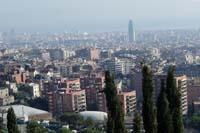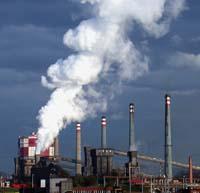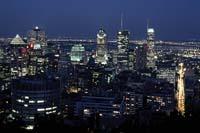The city, inside
Cities, garbage generating machines

Waste management is a serious problem in all industrialized countries. However, it is more serious in developing countries that do not have developed an appropriate waste collection and treatment system.
The main urban waste treatment system has been the landfill depot. This system generates a wide variety of damage, including the risk of groundwater contamination, the existence of microorganisms and areas conducive to the cultivation of rats that are a source of disease, the deterioration of the landscape and the production of odors.



Several ways have been broken to solve the problem. For example, incineration facilities reduce the space occupied by garbage (the amount of garbage is reduced by 90%). But the risk of health and the environment is not eliminated.
The air of the cities remains the same. According to data from the World Health Organization, 1.5 billion citizens suffer disproportionate rates of pollution. The effects depend on the pollutants present in the air and their exposure time. Breathing difficulties, cancer, and heavy metal problems are the most serious.
Smoga or smoke cloud
Ozone, nitrogen oxides and carbon monoxide are currently the main causes of air pollution. Previously, air quality problems were due to sulfur dioxide from industrial activity, while now the main problem is photochemical smog produced by traffic in many cities.
Photochemical smog originates from vehicles. Its sources are cars, trucks and buses, among others. Fuel combustion (gasoline, diesel, etc.) in internal combustion engines should only produce carbon dioxide and water vapor, at least in theory. However, due to combustion conditions nitrogen oxides are also generated (the air entering the cylinder has 70% nitrogen) and organic compounds.
One of the nitrogen oxides --nitrogen dioxide - is a potent lung irritant. Sulfur dioxide has now been replaced by nitrogen dioxide, one of the main urban pollutants. In addition, nitrogen dioxide reacts with water forming nitric acid. Nitric acid is a harmful, toxic compound and can cause various burns.

Secondary pollutants, i.e. those that are not emitted directly into the atmosphere, are the most dangerous, especially volatile organic compounds and ozone. Many of the volatile organic compounds, such as benzene, are violent carcinogens.
The case of ozone is special. Although it protects us from the ultraviolet rays of the Sun in the stratosphere, it is very harmful on the earth's surface: it prevents breathing, affects trees and crops... Ozone comes from the reaction radiated by nitrogen oxides and volatile organic compounds. The amount of ozone generated depends on the concentrations of weather agents and background. These concentrations are mainly due to road traffic.
The only solution is to reduce vehicle traffic.
Urban hum

Although not seen, noise is also a type of pollution, i.e. noise pollution. Noise in cities is not something current. Noise occurs spontaneously in meeting places. Row cars, garbage truck, drill to repair the sidewalk, landing plane, motorcycle that passes through the window... all these noises are part of the city and affect health such as water or air pollution.
It is not surprising that the areas with the highest noise are those with the highest traffic.

Hearing loss, high blood pressure, stress, sleep problems, difficulties in concentration and work and, in general, loss of quality of life and inability to stay relaxed are the most significant effects of noise to humans exceeding 70 decibels.
All these factors make the air temperature in cities 5°C higher than the air temperature in nearby lands. Most of the urban land is occupied by roads and buildings. But there is a solution to the problem: preserve and revitalize urban green areas. These green areas improve climate, absorb atmospheric pollutants and are an ideal place for leisure, among others. No one doubts that trees improve air quality in cities. Trees eliminate 0.7 tons of carbon monoxide per year, 2.1 tons of sulfur dioxide, 2.4 tons of nitrogen dioxide and 6 tons of ozone per ten thousand square meters of green area.
The solution would be to change the lifestyle, but for this we should change the customs so far. A really difficult task. Meanwhile, as cities grow and grow, resource needs increase to meet them.






